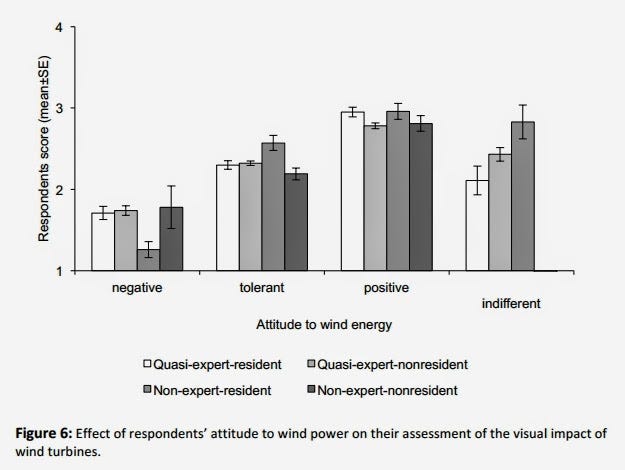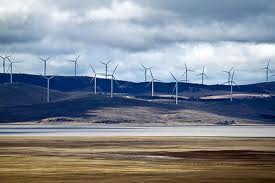You’re driving down a stretch of familiar highway and the road in front of you is framed by gently undulating landscape. As you weave past a familiar corner, a single set of rotating blades emerges over the hill. Your skin bristles as you watch a silent herd of machines rise behind a shining lake.
Instantly, a hot sickness spreads through your viscera. A thick, seeping sensation that makes your turn away from the hills. A view you’ve gazed upon for decades is now blanketed by machines you hate — tall, slender representatives of an alien philosophy.
This instinctive revulsion plays a sizable role in how energy policy shifts in Australia. Despite the urgency with which technology must transition from harmful fuel types, the emotion of disgust holds sway over powerful and prominent influencers.
Treasurer Joe Hockey illustrated the prevalence of disgust whilst being interviewed on 2GB, regarding wind farms on the bounds of Lake George. Revulsion excused a moment of candid admission, in which he implied he’d actively investigated ways to see the wind farm dismantled.
“I must say I find those wind turbines around Lake George to be utterly offensive…..We can’t knock those ones off because they’re into locked-in schemes and there is a certain contractual obligation I’m told associated with those things.”
The Treasurer’s nausea has been matched by Prime Minister Tony Abbott’s paranoid anxiety about a clean technology invasion:
“Yes there’s an absolute forest of these things on the other side of the lake near Bungendore. I absolutely understand why people are anxious about these things that are sprouting like mushrooms all over the fields of our country”
The Prime Minister and the Federal Treasurer, repulsed by machines that harvest a resource, are two of the most powerful men in the country.
The machines patiently continue to generate electricity on the ridges bounding Lake George, inspiring roiling discontent in a select portion of those rolling into the political core of the country.
Though conservative British writer James Delingpole has little-to-no-influence on Australian political machinations, he provides a near-perfect example of technological disgust in a video he published recently, bluntly titled ‘Wanker Wind Farmer’.
Delingpole, a long-time opponent of wind energy, becomes visibly unsettled towards the end of the clip; his initial references to Churchill overtaken quickly by weird, meaningless insults.
Delingpole is visibly shaken by the presence of a machines converting sunlight and wind into electricity.
James Delingpole has attempted to influence energy policy directly — he recently ran for the seat of Corby in the UK. His rival in that election, Chris Heaton-Harris, was the one who convinced him to do so, in the name of ‘causing some hassle’ and ‘driving the wind issue up the political agenda’.
Australian groups that exist primarily to influence Australian political directions display a similar response to the existence of machines converting natural resources to electricity.
The Institute of Public Affairs recently released a report entitled ‘Public broadcaster or green activist? How the ABC spins Australia’s energy choices’. Their rationale for the title is the finding that ABC stories on renewable energy did not adopt a tone of “fear”:
“Overwhelmingly stories about renewable energy made use of the language of reason and the language of pragmatism…By contrast, stories which deployed the language of fear and cynicism were extremely rare. The latter is particularly striking considering the reliance of the industry on government subsidy”
The IPA’s publication states “In Chart 11 we can see that the imbalance is also reflected in language use”
The IPA scold the ABC for favouring reason over fear presumably due to their own fearful and revulsive reaction to stories on clean technology.
Australia’s most influential conservative think-tank declares here that the only acceptable way of describing renewable technology is the language of fear. They are truly baffled that others do not outwardly manifest a disgust they feel deep in their core.
This instinct can be seen as a behavioural immune response to ideological threats. Inbar, Pizarro and Bloom found in 2008 that disgust, originally evolved to ensure we’d avoid the intake noxious and disease-ridden substances, plays a big role in US conservative thinking.
Donald Trump’s plea to Alex Salmond over ‘ugly’ wind farm http://t.co/LYRxxtiY
— Guardian Environment (@guardianeco) September 14, 2011
In 2011, the researchers expanded their sample size and included 121 different countries. The result were similar — the tendency to be disgusted correlates strongly with conservatism, particularly for issues regarding purity and cleanliness. In this context, it’s logical that the visual presence of a repulsive item triggers disgust in strongly conservative individuals.
The regular citation of physical disgust as a criticism of wind power probably stems partly from simple opposition to efforts to decarbonise. Certainly, research indicates opinions of the technology feed in to visual perceptions.
“Respondents of all groups with a negative opinion of wind power considered landscapes with wind turbines significantly less attractive (mean = 1.69) than respondents who accept wind power conditionally (mean = 2.33), those who support wind power (mean = 2.8), and respondents indifferent to the issue (mean = 2.4)”

The strong instinct for conservative Australian politicians to keep doctors away from South African countries, for fear of exposure to Ebola, seems similarly illustrative of the prevalence and power of the conservative disgust response.
Each corner of the political spectrum carries its own basket of biases. All of us harbour some mental scheme that makes us ditch reason and rationality for the purpose of processing information with greater speed and ease. As the quantity of information grows larger, these processing shortcuts become more prevalent.
The disgust response goes far beyond these common cognitive proxies.
Electricity sourced from the burning of fossil fuels comes burdened with the compulsory infliction of damage to human habitat — greenhouse gases trapping heat and unbalancing a sensitive complex system. The costs of these energy-dense fuel types make them increasingly untenable, and with this shift, the threat of ideological infection looms creepily at the back of political minds already on the defensive.
You may not harbour a sick, expanding nausea as you next drive past a fleet of wind turbines, but those charged with steering the safe passage of our nation do. That ought to inspire a creeping nervousness in us all.












